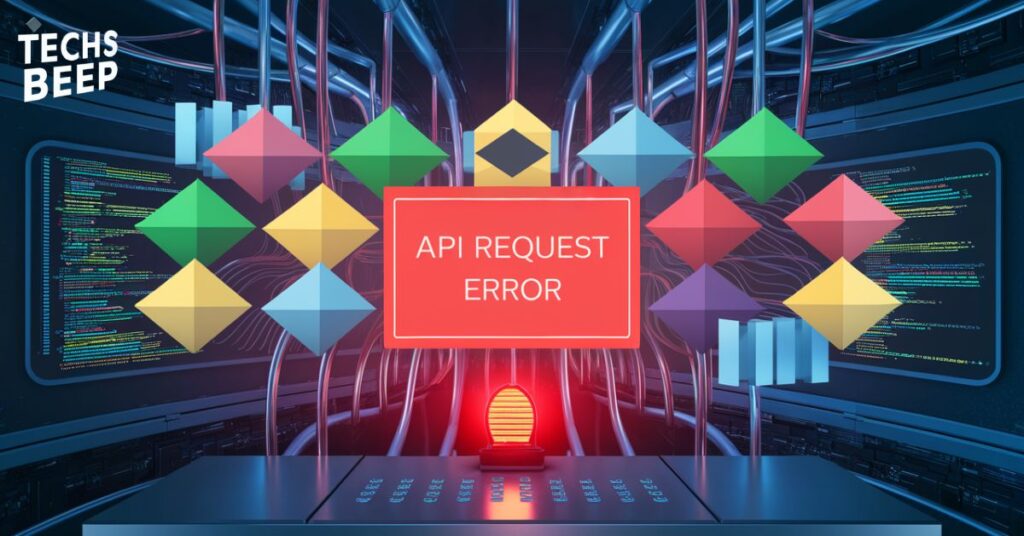FintechAsia error codes are specific messages that appear when something goes wrong. They help users and developers understand problems in the system. These codes are important for troubleshooting and fixing issues quickly.
Ever felt lost in the world of digital finance? FintechAsia error codes might seem like a maze, but they’re actually your guide. These codes help pinpoint issues when things go wrong. Understanding them can save your time and stress, making your fintech journey smoother.
FintechAsia error codes used to help users understand problems. These codes are short numbers or letters that point to specific issues. When something goes wrong, an error code appears. By knowing what these codes mean, users can fix problems faster.
What is the FintechAsia Error Code System?
FintechAsia error codes system is designed to help users quickly identify issues. Each error code has a specific structure that includes numbers and letters. These codes are organized into categories for easy reference.
Understanding error codes is crucial for efficient problem-solving. They help pinpoint the exact nature of an issue. Quick identification of errors can save time and resources in troubleshooting. To identify an error code, look for a unique alphanumeric string in error messages.
These codes are usually displayed prominently when an error occurs. For general troubleshooting, start by looking up the error code in FintechAsia’s documentation. Then follow the suggested steps to resolve the issue.
Common Causes of FintechAsia Error Codes
FintechAsia error codes can be caused by network problems, old software, or user mistakes. They can also happen because of security issues, data problems, or when the system gets too busy.
1. Network Connectivity Issues
Bad internet can cause FintechAsia errors. When the connection is poor, money transfers might fail. Slow internet can also make the app time out. This can be very frustrating for users trying to do their banking.
2. Database Errors
FintechAsia’s database causes problems. It might have wrong information or be too full. When this happens, the app might work slowly or crash. Users might see weird numbers in their accounts or get error messages.
3. API Integration Failures
APIs help FintechAsia talk to other systems. Sometimes, these talks go wrong. The app might use old or wrong codes. Or it might not be allowed to talk to the other system. This can stop users from doing what they need to do.
4. Security Breaches
FintechAsia takes safety seriously. If someone tries to break in, the app shows errors. It might lock an account if something looks fishy. This keeps users safe but can be annoying if it’s a false alarm.
5. System Maintenance and Updates
FintechAsia needs to update sometimes. During updates, users might see error codes. New updates can cause problems with older phones. Sometimes, updates don’t finish right, causing weird errors.
FintechAsia Error Codes are explained Below:
Authentication and Authorization Errors
Authentication and Authorization errors are common in FintechAsia error codes systems. These errors can prevent users from accessing their accounts. They often occur when users try to log in or perform actions.
Invalid credentials are a frequent issue. This happens when users enter wrong usernames or passwords. The system may lock accounts after multiple failed attempts. Users should double-check their login details before trying again.
To solve Authentication and Authorization Errors, users should keep their login details safe. It’s important to use strong, unique passwords for each account. If problems persist, contacting customer support can often resolve the issue quickly.
Read this article: Investigating the Potential of the Plugboxlinux Gaming Platform
API Request Errors

API Request FintechAsia error codes can be frustrating for developers. These errors occur when making calls to the FintechAsia error codes API. They can happen for various reasons and often require careful troubleshooting.
Invalid request format is a common error type. It means the API call wasn’t structured correctly. This could be due to incorrect JSON syntax or wrong data types. Missing required parameters is another frequent issue. Some API endpoints need specific information to work.
To resolve API Request Errors, start by verifying your API documentation and ensuring correct endpoint and parameter usage. Test your requests with tools like Postman, implement proper error handling in your code, and keep your API version current.
Data Validation Errors
Data validation errors of FintechAsia can cause problems. They happen when data is not correct. Data validation errors in FintechAsia error codes can mess up systems. We need to check data carefully. Invalid input data is one type of error. This means the data is wrong.
Data type mismatches are another issue. This happens when data types don’t match. For example, putting letters in a number field. Or using dates in a time field. We should use the right data types.
To solve data validation errors, we can take steps. Use input validation checks in forms. Set up clear data rules in databases. Train staff on correct data entry. Use software to catch errors early. Regularly clean and update data. Double-check important information. Create backup systems for data. Ask users to confirm their entries.
Transaction Processing Errors
Transaction Processing Errors of FintechAsia can be frustrating. They happen when making payments. These errors stop transactions. They can occur for different reasons.
Insufficient funds is a common problem. It means not enough money in the account. The payment will fail. You need to add more money. Declined transactions are another issue. Banks may block a payment. This can be for security reasons. You may need to call your bank.
Solutions can help prevent these errors. Check your balance before paying. Use secure networks for transactions. Contact your bank if issues persist. Keep some extra money in your account.
Integration Errors

Integration errors of FintechAsia can cause big problems. They happen when different parts of a system don’t work well together. These errors can stop important tasks from happening. They can also make users unhappy with the system.
SSL/TLS certificate errors can make connections unsafe. These errors can be hard to fix. They often need different solutions. Some might be quick to solve. Others might take a long time to figure out. It’s important to find and fix these errors fast.
To solve integration errors, start by checking each part of the system. Look at logs to find where the problem is. Test connections to make sure they work. Update any old or broken parts. Keep an eye on the system to catch problems early. Having a plan to fix common errors can help solve them faster.
Account-related Errors
Account-related FintechAsia error codes can cause frustration for users. One common issue is account suspension. This can happen for various reasons. Users may break rules or have suspicious activity.
KYC verification failures are another problem. KYC stands for “Know Your Customer“. Some users struggle to provide correct documents. This can lead to account restrictions or rejection.
Accounts may become dormant if not used regularly. To fix account-related errors, contact customer support. They can help with suspensions and KYC issues. For exceeded limits, review account terms. To avoid inactivity, use your account regularly.
Compliance and Regulatory Errors
Compliance rules in FintechAsia error codes help keep money safe. Banks must watch for weird money moves. Some places have strict rules about money. Banks can’t do business with bad people. If banks miss these things, they get in trouble. They might have to pay big fines.
Some countries are off-limits for money transfers. Banks can’t send cash to these places. Some deals are not allowed by law. Banks must report big money moves to the government. If they forget to report, it’s a big problem. The bank could lose its license.
Banks can fix these issues with better training. They should use good computer systems. Regular checks help catch mistakes early. Banks should have clear rules for workers to follow. Good teamwork between departments is key. Staying up to date on laws is very important.
System and Infrastructure Errors

In system and infrastructure FintechAsia error codes, servers can sometimes stop working. This is called server downtime. It can cause websites to be unavailable. Users may not be able to access services. This can be frustrating for everyone involved.
Network problems can disrupt connections. Devices may struggle to communicate. This can slow down or stop online activities. It affects both businesses and individuals. Maintenance mode is planned downtime. It’s used to update or fix systems.
Plan maintenance for low-traffic times. Inform users well in advance. Keep maintenance periods short. Have a rollback plan if things go wrong. Use reliable load balancing software. Set up automatic failover systems. Monitor traffic patterns closely. Test load balancers regularly to ensure they work.
Security-related Errors
In security-related FintechAsia error codes websites can have security problems. These issues can be tricky to spot. They may cause trouble for users. It’s important to fix them quickly. Suspicious activity detection is one concern. It looks for odd behavior.
IP address blocking helps stop bad actors. It can prevent access from certain places. This method isn’t always perfect. It may block good users by mistake. Device fingerprinting can have problems too. It tries to identify unique devices. Sometimes it gets confusing.
Improving IP blocking methods in FintechAsia error codes is useful. Using allow-lists can help. This lets known good users in. It reduces false positives. Better device tracking can be implemented. This makes fingerprinting more accurate. It reduces errors in user identification.
How to Diagnose FintechAsia Error Codes

FintechAsia error codes used to identify system issues, grouping them into categories like network, security, and data errors. Users can diagnose problems by consulting the error code database.
1. Understanding Error Codes
Error codes help identify issues in FintechAsia systems. They consist of letters and numbers. Each code represents a specific problem. Understanding error code helps in solving the problem for the user.
2. Common Error Code Categories
FintechAsia groups its error codes into different types. Some are about network problems, others are about security issues, and some deal with data errors. Knowing which group an error belongs to can give you a head start on solving it.
3. Using the Error Code Database
FintechAsia has a big list of all its error codes. You can look up any code you see in this database. It’s like a dictionary, but for errors. When you find your code, you’ll see what it means and how to fix it.
4. Troubleshooting Steps
When you run into an error, first write down the exact code you see. Then, check FintechAsia’s guide for what to do next. They’ll give you step-by-step instructions to try and fix it.
5. Seeking Additional Help
You might still be stuck after trying everything. That’s the time to ask for help. Contact FintechAsia’s support team. Tell them the error code and what you’ve already tried. They’ll guide you to solve the error.
Common Issues with Quick Solutions
| Error Code | Issue | Possible Cause | Quick Solution |
| FIN001 | Transaction Failed | Network Timeout | Retry transaction or check internet connection |
| FIN002 | Account Locked | Multiple Failed Login Attempts | Wait 30 minutes and try again or contact support |
| FIN003 | Invalid Input | Incorrect Data Format | Double-check input and ensure it matches required format |
| FIN004 | Insufficient Funds | Low Account Balance | Add funds to account or use alternative payment method |
| FIN005 | Unverified Account | Incomplete KYC | Complete identity verification process in account settings |
Best Practices for Error Handling and Resolution
Implement proper error logging and regularly review logs to identify patterns and root causes quickly. Provide clear communication to users during errors, establish escalation procedures, and continuously improve documentation for better future resolution.
Some Key Points are:
- Implement proper error logging for effective troubleshooting.
- Review error logs regularly to identify patterns.
- Provide clear, understandable error messages to users.
- Establish clear escalation procedures for complex errors.
- Train staff on when and how to escalate issues.
- Continuously improve error documentation.
Read this article: An In-Depth Guide About The SWGOH Web Store
Final Thoughts
Understanding FintechAsia error codes is crucial for smooth operations. These codes help identify and resolve issues quickly. By knowing common causes like network problems or software bugs, users can troubleshoot effectively.
Diagnosing errors involves checking network connections and reviewing logs. Solutions often include improving network stability and updating software regularly. User training also plays a key role in preventing input errors.
Proactive error management is essential for long-term success. Regular system maintenance and monitoring help prevent issues. Staying updated with FintechAsia error codes documentation and community resources is valuable. With ongoing attention to FintechAsia error codes, businesses can ensure their financial technology runs smoothly and efficiently.
Frequently Asked Questions
What are FintechAsia Error Codes?
FintechAsia error codes are messages that indicate specific problems in the system. They help users and technicians identify and fix issues quickly.
How can I check if a server overload is causing errors?
Monitor the system’s performance metrics and response times. If they’re significantly slower than usual, server overload might be the cause.
What should I do if I encounter a network connectivity error?
First, check your internet connection. Then, try accessing the FintechAsia platform from a different network to isolate the issue.
How often should software updates be performed to prevent errors?
Regular updates are crucial, typically monthly or quarterly. Always test updates in a staging environment before applying them to the live system.
Where can I find more information about specific FintechAsia Error Codes?
Consult the official FintechAsia documentation for detailed explanations. User forums and support channels can also provide helpful insights.








